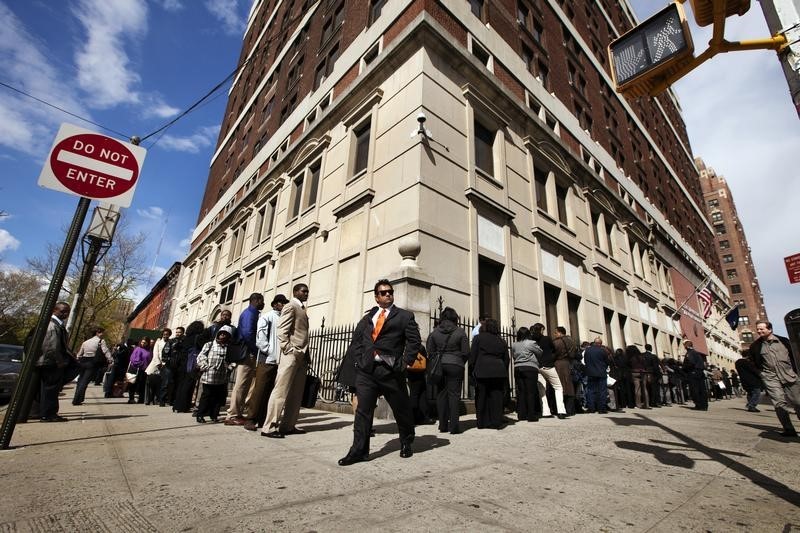Investing.com – While all eyes will be on the publication of the November employment report out at 8:30AM ET (15:30GMT) Friday, the focus for markets beyond an expected continued show of strength from the U.S. labor market will be on the implications for the path of the Federal Reserve’s (Fed) monetary policy.
The consensus forecast is that Friday’s report will show the economy created 175,000 jobs in November, up from 161,000 in October.
The unemployment rate is expected to hold steady at 4.9% and average earnings are expected to increase by 0.2%.
Fed officials have already indicated that they feel the labor market is at or very close to their objective of full employment, though there are still weak spots in the labor market.
For example, the participation rate, an indicator for the percentage of working-age people who are employed or actively looking for a job, did fall in October to near its lowest level since 1978.
Still, Thursday’s data showed that weekly jobless claims remained below the 300,000 threshold generally associated with a firming labor market for 91 consecutive weeks, its longest stretch since 1970.
Annualized average wage growth in October was at 2.8%, its fastest pace since 2009 and a positive sign that would suggest consumers could begin to pass those increased earnings over to the real economy.
Implications for Fed policy tightening
With all this in mind, and with markets already fully discounting a 25 basis point hike at the December 13-14 meeting, it would most likely take a cataclysmic report to sway the Fed from its current path.
However, forward-looking markets could well use the data to adjust their expectations for a future move in 2017 by the U.S. monetary authority even prior to the announcement and implementation of policies by then President Donald Trump.
The Trump administration is widely expected to pass policies to increase infrastructure spending that could foster economic growth and accelerate inflation, placing further pressure on the Fed to move ahead with policy normalization.
According to Investing.com's Fed Rate Monitor Tool, markets are currently pricing in a second rate hike at the June 2017 decision, meeting in which the odds pass the 50% threshold at 58.1%.
In the bracketing policy decision dates, Fed fund futures show only a 27.3% chance of a move in May, while odds for an additional hike in July were at 63.3%.
Meanwhile, the dollar was trading flat ahead of the publication. At 6:36AM ET (8:36GMT), the U.S. dollar index, which measures the greenback’s strength against a trade-weighted basket of six major currencies, was up 0.05% at 101.07 .
Gold for February delivery on the Comex division of the New York Mercantile Exchange gained $2.35, or 0.20%, to trade at $1,171.75 by 6:38AM ET (8:38GMT). The yellow metal was bouncing off a 10-month low on Friday, was slightly higher ahead of the key U.S. employment report.
U.S. stock futures pointed to a lower open. The blue-chip Dow futures declined 29 points, or 0.15%, by 6:41AM ET (11:41GMT), the S&P 500 futures fell 6 points, or 0.27%, while the tech-heavy Nasdaq 100 futures lost 23 points, or 0.49%.
